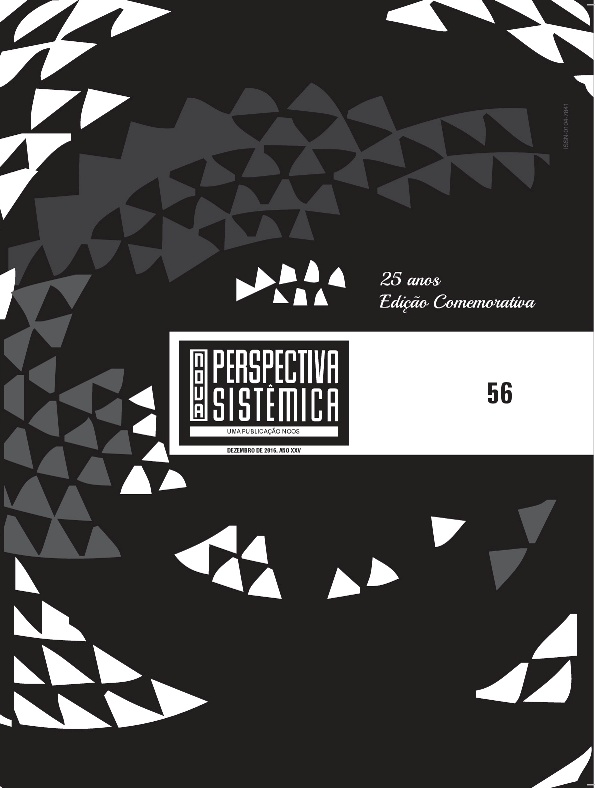Conexões Transnacionais através de Tecnologias Emergentes
Keywords:
tecnologias emergentes, imigração, famílias transnacionais, crianças, juventude, tecnologia da informação e comunicaçãoAbstract
As tecnologias da informação e da comunicação moldam o desenvolvimento humano e o da identidade. As crianças e jovens imigrantes não são exceções. Este artigo explora como as tecnologias emergentes moldam e influenciam as relações intergeracionais dentro e entre famílias. As tecnologias da comunicação dominantes questionam as noções geralmente aceitas quanto à psicologia dos imigrantes, inclusive as funções emocionais, as relacionadas ao desenvolvimento, relações familiares e como o poder de ação é construído entre as crianças e jovens imigrantes. Exploramos como os desafios e oportunidades oferecidos pelas tecnologias emergentes informam os serviços clínicos em como oferecer um atendimento competentes às famílias imigrantes. Esses sistemas assistenciais transnacionais emergentes não são um fenômeno novo, mas são a corrente principal ao redor do globo.
Downloads
References
Alfred, M.V. (2010). Transnational migration, social capital and lifelong learning in the USA. International Journal of Lifelong Education, 29(2), 219-235.
Bacigalupe, G., & Câmara, M. (2012). Transnational families and social technologies: reassessing immigration psychology. Journal of Ethnic and Migration Studies, 38(9), 1425-1438.
Bacigalupe, G., & Lambe, S. (2011). Virtualizing intimacy: information communication technologies and transnational families in therapy. Family Process, 50(1), 12-16.
Baldassar, I. (2008). Missing kin and longing to be together: emotions and the constructions of co-presence in transnational relationships. Journal of intercultural Studies, 29(3), 247-266.
Benítez, J.I. (2006). Transnational dimensions of the digital divide among salvadoran immigrants in the Washington DC metropolitan area. Global Networks, 6(2), 181-199.
Elias, N., & Blemish, D. (2009). Spinning the web of identity: the roles of the internet in the lives of immigrant adolescents. New Media Society, 11 (4), 533-551.
Fong, E., Cao, X., & Chan, E. (2010) Out of sight, out of mind? Pattern of transnational contact among chinese and indian immigrants in Toronto. Sociological Forum, 25 (3), 428-449.
Gardner, K. (2012). Transnational migration and the study of children: an introduction. Journal of Ethnic and Migration Studies, 38, 889-912.
Gillwald, A., Milek, A., & Stork, C. (2010) Gender assessment of ICT access and usage in Africa. Research ICT Africa 1 (5), 1-44.
Hailkkola, I. (2011). Making connections: second-generation children and the transnational field of relations. Journal of Ethnic and Migration Studies, 37(8), 1201-1217.
Hamel, J.Y. (2009) Information and communication technologies and migration. Human Development Research Paper 2009/39. New York: United Nations Development Program, Human Development Report Office.
Hopkins, I. (2009). Media and migration. Australian Journal of Communication, 36(2), 36. In: M. Ito, H. Horst, M. Bittani, D. Boyd, B. Herr-Stephenson, P.G. Lange, & I. Robinson, (2008). Living and learning with new media; summary of findings from the Digital Youth Project. The John D. and Catherine T. MacArthur Foundation Reports on Digital Media and Learning.
Lam, W.S.E., & Rosario-Ramos, E. (2000) Multilingual literacies in transnational digitally mediated context: an exploratory study if immigrant tens in the United States. Language and Education, 23 (2), 171-190.
Lam, W. S. E., & Rosario-Ramos, E. (2009). Multilingual literacies in transnational digitally mediated contexts: an exploratory study of immigrant teens in the United States. Language and Education, 23(2), 171-190. doi: 10.1080/09500780802152929
Madianou, M., & Miller, D. (2012) Migration and new media. New York: Routledge.
McDevitt, M., & Butler, M. (2011) Latino Youth as information leaders: implications for families interaction and civic engagement in immigrants communities. InterActions: UCLA Journal of Education and Information Studies, 7 (2).
McGinnis, T., Goodstein-Stolzenberg, A., & Saliani, E.C. (2007). “indnpride”: Online spaces of transnational youth as sites of creative and sophisticated literacy and identity work. Linguistic and Education, 18 (3-4), 383-304.
Panagakos, A.N., & Horst, H.A. (2006). Return to Cyberia: technology and the social worlds of transnational migrants. Global Networks, 6(2), 109-124.
Rigby, T., & New Day, F. (2010). Sín País (Sem País), Harriman, NY, New Day Films.
Sanchez, P. & Salazar, M., (2002). Transnational computer use in urban latino immigrant communities. Urban Education, 47 (1), 90-116.
Skop, E., & Adams, P.C., (2009). Creating and inhabiting virtual places: indian immigrants in cyberspace. National Identities, 11(2), 127-147.
Uy-Tioco. (2007). Overseas Filipino workers and text messaging: reinventing transnational mothering. Continuum: Journal of Media & Cultural Studies, 21(2).
Wilding, R. (2006). “Virtual” intimacies? Families communicating across transnational context. Global Networks, 6(2): 125-142. Cited in Hamel (2009), p.29.
Downloads
How to Cite
Issue
Section
License
Autores que publicam nesta revista concordam com os seguintes termos:- Autores mantém os direitos autorais e concedem à revista o direito de primeira publicação, com o trabalho licenciado simultaneamente sob uma Licença Creative Commons Attribution após a publicação, permitindo o compartilhamento do trabalho com reconhecimento da autoria do trabalho e publicação inicial nesta revista.
- Autores têm autorização para assumir contratos adicionais separadamente, para distribuição não-exclusiva da versão do trabalho publicada nesta revista (ex.: publicar em repositório institucional ou como capítulo de livro), com reconhecimento de autoria e publicação inicial nesta revista.
- Autores têm permissão e são estimulados a publicar e distribuir seu trabalho online (ex.: em repositórios institucionais ou na sua página pessoal) a qualquer ponto antes ou durante o processo editorial, já que isso pode gerar alterações produtivas, bem como aumentar o impacto e a citação do trabalho publicado (Veja O Efeito do Acesso Livre).

















